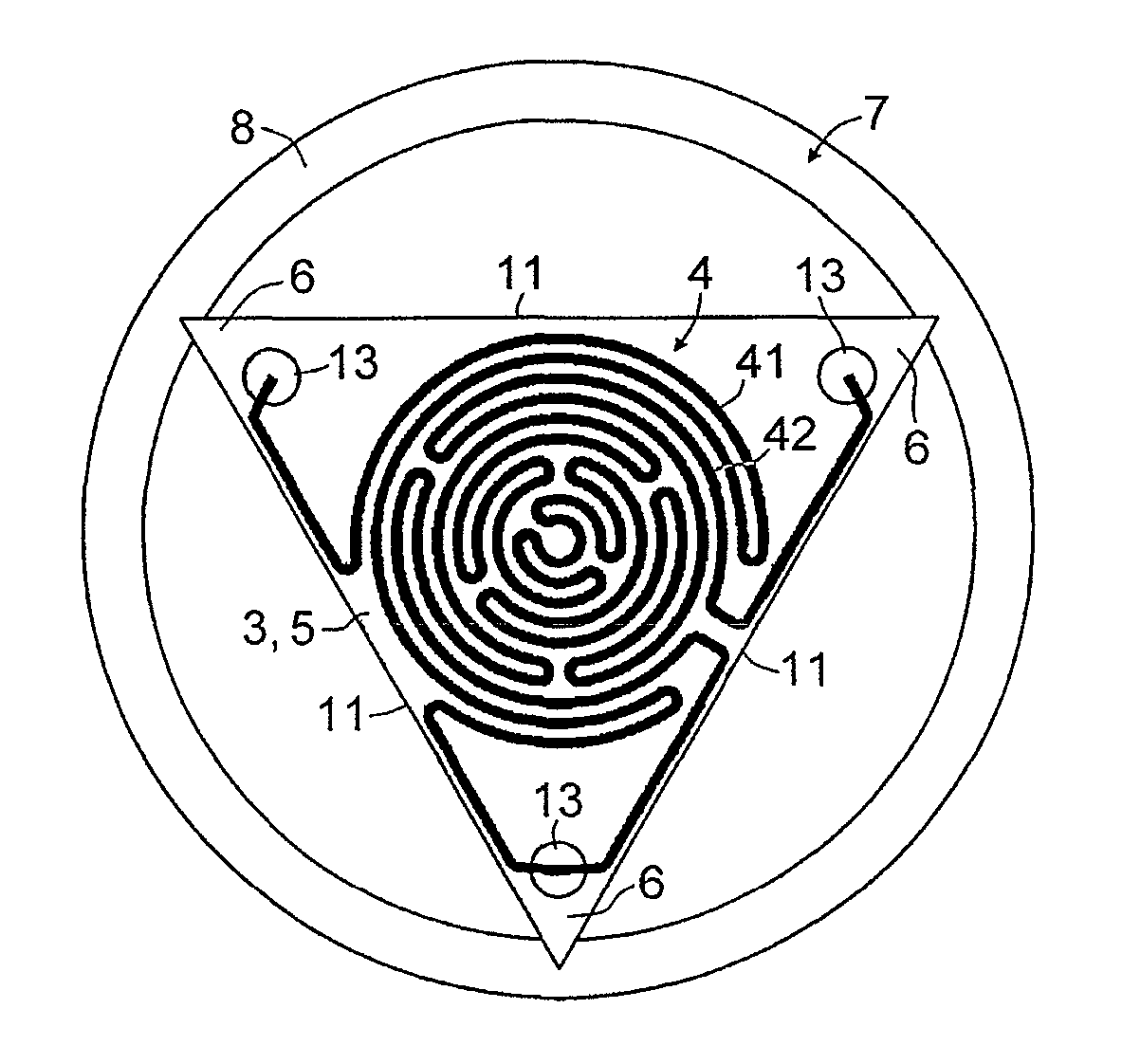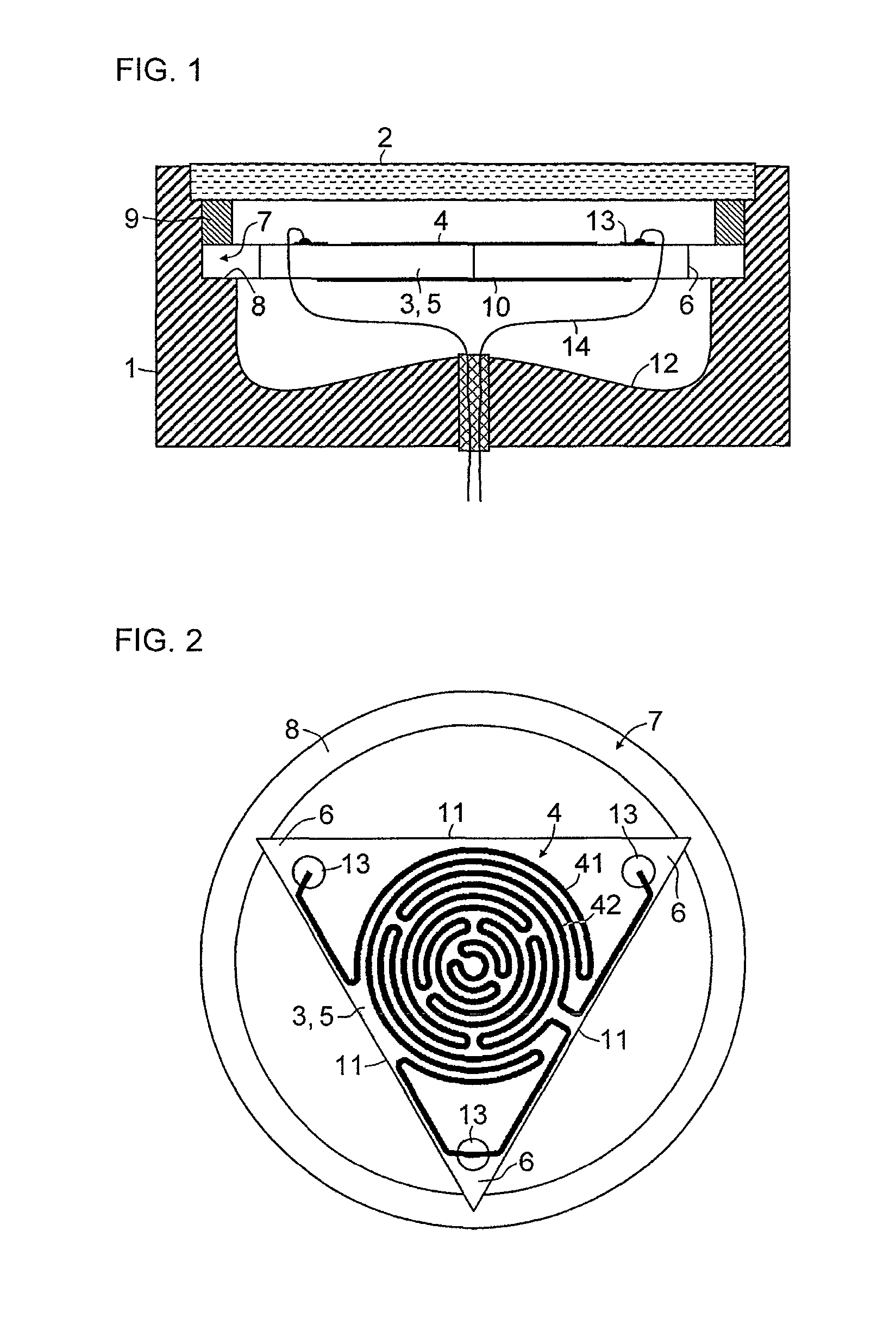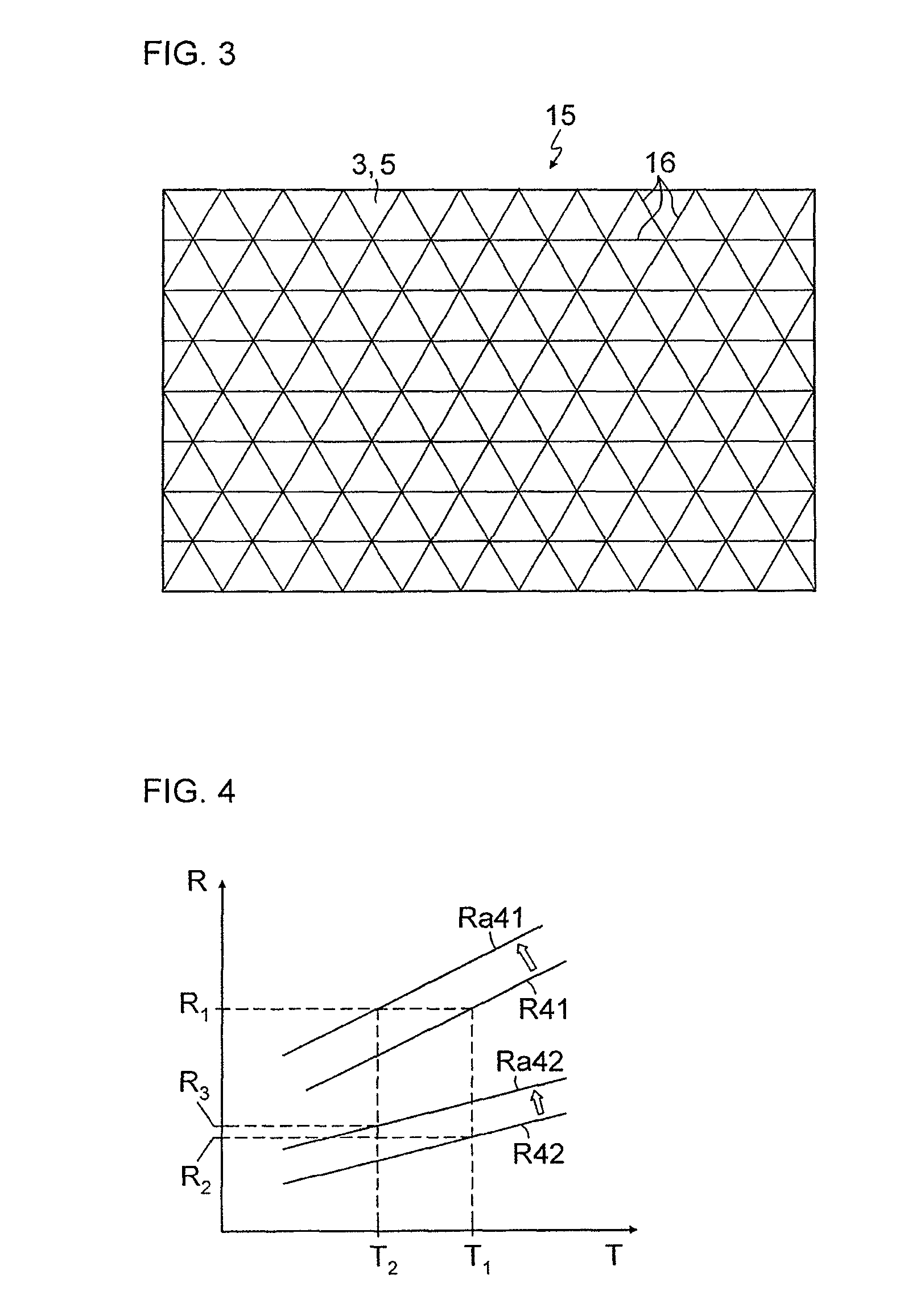Infrared radiator arrangement for a gas analysis device
a gas analysis and infrared radiator technology, applied in the direction of heat measurement, x-ray tubes, optical radiation measurement, etc., can solve the problem of not revealing the exact position of the ceramic substrate in the radiator housing
- Summary
- Abstract
- Description
- Claims
- Application Information
AI Technical Summary
Benefits of technology
Problems solved by technology
Method used
Image
Examples
Embodiment Construction
[0025]FIG. 1 shows a cross section of an infrared radiator arrangement with a radiator housing 1, the interior of which is closed off by an infrared-transmissive window 2. Arranged in the radiator housing 1 is a plate-shaped ceramic body 3, where a structured heat resistant layer 4 is shown applied on the side of the plate-shaped ceramic body 3 facing the window.
[0026]FIG. 2 shows a plan view of the plate-shaped ceramic body 3 comprising an equilateral triangular plate 5 mounted at its triangular tips 6 in a circumferential groove 7 arranged in the inner circumference of the radiator housing 1. The groove 7 is formed by a circumferential shoulder 8, situated in the radiator housing 1, and a clamping collar 9 arranged between the window 2 and the ceramic body 3. A heat resistant layer 4 consists of a platinum paste, which is applied to the ceramic body 3 by screen printing and subsequently baked. It is possible to print a plurality of heating structures 41, 42 or structures for tempe...
PUM
 Login to View More
Login to View More Abstract
Description
Claims
Application Information
 Login to View More
Login to View More - R&D
- Intellectual Property
- Life Sciences
- Materials
- Tech Scout
- Unparalleled Data Quality
- Higher Quality Content
- 60% Fewer Hallucinations
Browse by: Latest US Patents, China's latest patents, Technical Efficacy Thesaurus, Application Domain, Technology Topic, Popular Technical Reports.
© 2025 PatSnap. All rights reserved.Legal|Privacy policy|Modern Slavery Act Transparency Statement|Sitemap|About US| Contact US: help@patsnap.com



